Spring is coming, a great time for planting and planning, so with that in mind here are 10 easy to grow RHS ‘Perfect for Pollinators’ approved plants for your garden.
The vast majority of these, I have grown myself, so this is my measure of easy! Between having a business and a family, I do try and take care of my garden, but I am not always on it! No one is perfect 🙂
These suggestions are a mixture of native and non-native, which is fine and very common in most gardens. Research shows pollinators and insects do prefer native plants, but they like both and non natives can extend the flowering season as they often bloom for longer. You want a mixture of plants in your garden, if you’re stuggling, don’t try and follow a theme and specific look, diverse is beautiful.
These are all fairly common garden plants and should be easy to find in a local garden centre. If you can, aim to have something flowering every season to ensure insects have some nectar to forage.
Yarrow
Achillea
Flower: Summer
Sunlight: Full Sun
Only white yarrow is generally considered native, but there are some lovely colours, terracotta being my personal favourite. They have lovely flat flower tops in summer and canm bring some nice little height to a mid border.
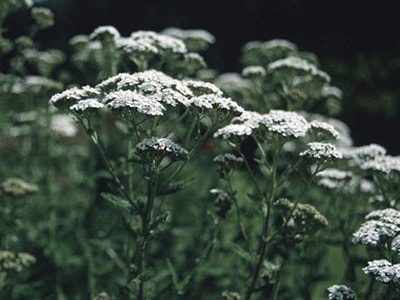
English Lavender
Lavandula angustifolia
Flower: Late Spring and Summer
Sunlight: Full Sun
Pruning: cut back in the early spring to keep the shape.
If you have a sun spot that you struggle to water, a lavender could be the one for you. They’re very drought tolerant and the bees absolutely love these purple flowers in summer.

Rosemary
Rosmarinus officinalis
Flower: Spring
Sunlight: Full Sun
Pruning: After flowering
Rosemary is a lovely easy plant to grow, a nice evergreen bush or trailing plant providing cute little purple flowers all summer (and beyond!) but can also be used in the kitchen. A grest addition for any sunny spot in your garden.

Hollyhock
Alcea rosea
Flower: Spring and Summer
Sunlight: Full Sun
Pruning: Cut down the flower spikes when the flowers have faded
Hollyhocks have beautiful stall stems with flowers up them, mine is a bee magnet all summer and gives some stunning structure. If it’s a windy spot, they may need a cane to support them
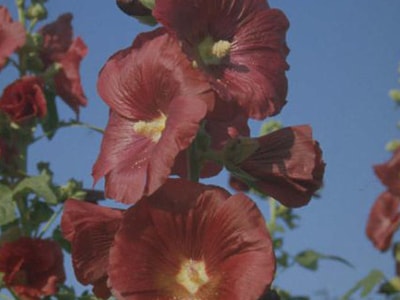
March Marigold
Caltha palustris
Flower: Spring and Summer
Sunlight: Full Sun
Pruning: Cut after flowering to prolong
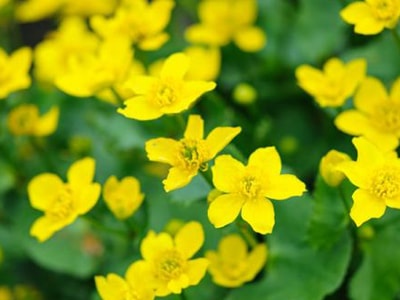
Salvia
Salvia species
Flower: Summer / Autumn
Sunlight: Full Sun / partial Shade
Pruning: Dead-head faded flower spikes to prolong flowering
There are many different kinds of salvias, you can really pick the colour and heigh prefrence you like. In my experience they’re easy to grow in pots or the ground and also easy to collect seeds from if you want to grow more.

Lamb’s Ear
Stachys byzantina
Flower: Summer
Sunlight: Full Sun
Pruning: Remove flowers to prolong the life of the plant
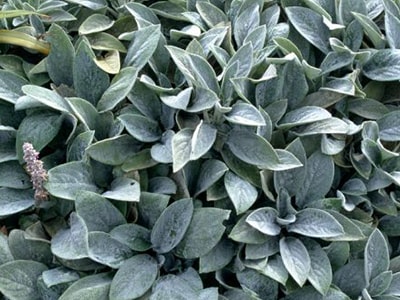
Dahlia
Dahlia species & hybrids
Flower: Summer / Autumn
Sunlight: Full Sun
Type: herbaceous perennial
Eventual Height and Spread: 0.1-0.5 metres spread and 1 – 1.2 metres height
Pruning: Remove dying flowers quickly to prolong the life of the plant

Clematis
Clematis heracleifolia
Flower: Varying – there are types for Spring, Summer, Autumn and Winter
Sunlight: Full Sun
Pruning: Remove dying flowers quickly to prolong the life of the plant
Clematis are a great choice for a fence or a wall where you can add a trellis. when mine blooms in august it’s a delight, but you can get winter varieties and ever green.

Bell Heather
Erica cinerea
Flower: Summer and Autumn
Sunlight: Full Sun
Heathers are a beautiful little shrub found all over the UK. They generally need ericaceous soil but are otherwise easy to grow and care for.
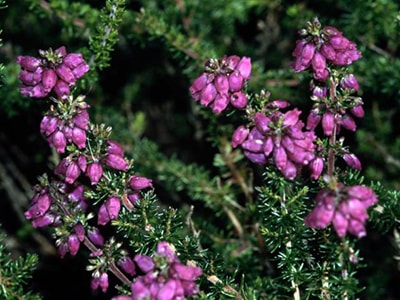
Hopefully, this list will give you a good start in considering bees next time you purchase a plant for your garden.
It will be worth it when you start to see your garden becoming a mini wildlife haven!
For an extensive well-researched list of plants for pollinators, please see this from RHS
Photos from RHS

[…] have a handy post of easy plants for pollinators […]